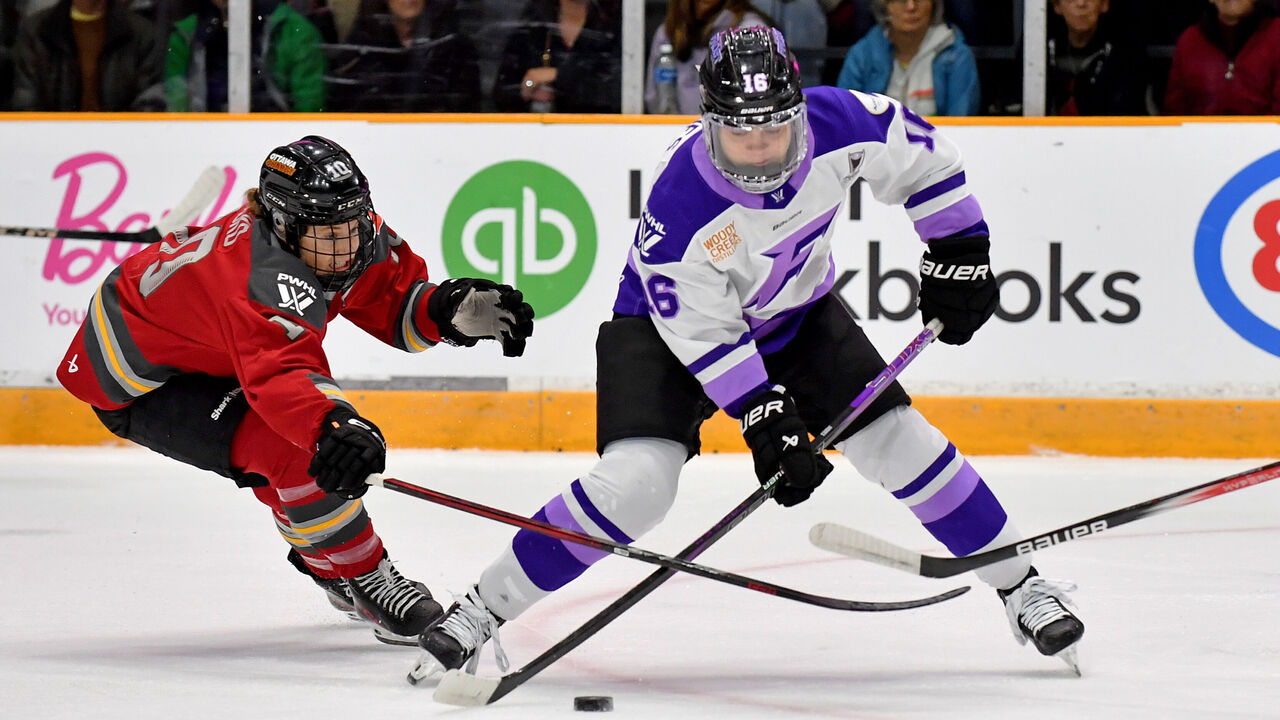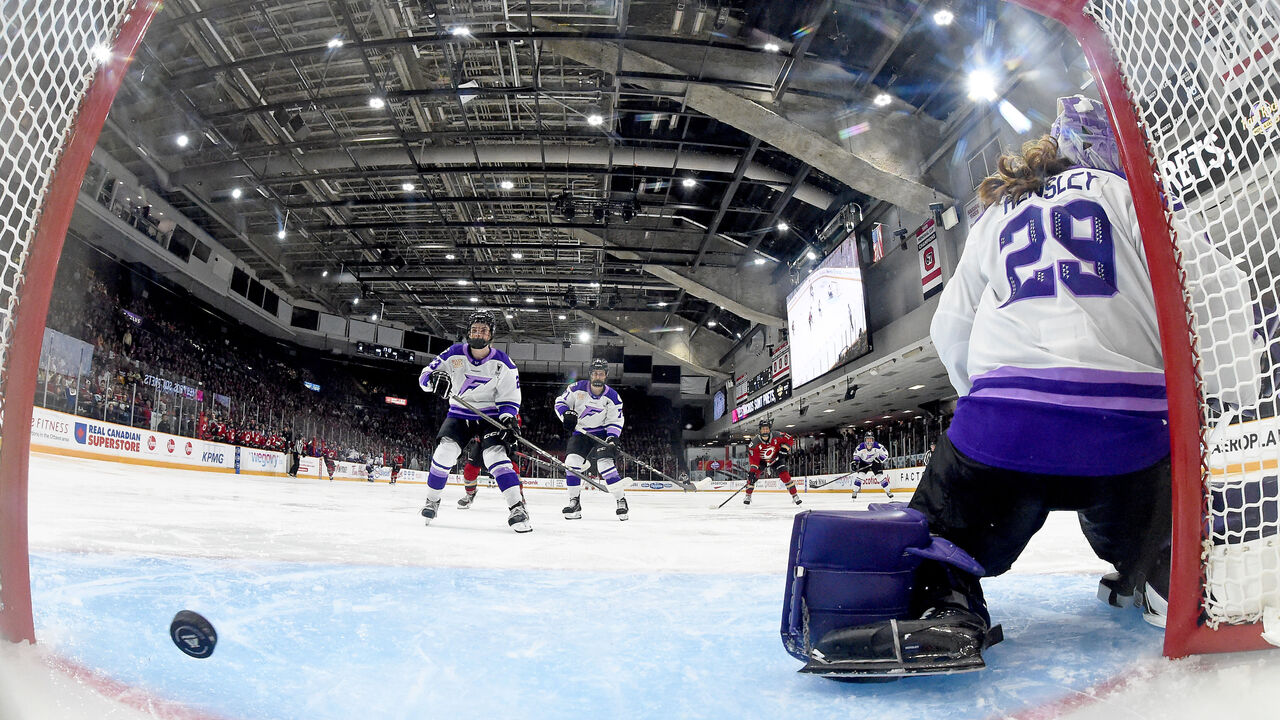Without a U.S. TV deal, the PWHL risks stalling out
The PWHL wrapped up its second season with full arenas, passionate fans, and a playoff chase that's leaving little doubt about the quality of the on-ice product. But even as the league adds expansion teams and builds toward long-term sustainability, one piece of infrastructure remains noticeably absent: a U.S. TV deal.
"It's certainly important to grow across the country as we look to bring in a national media partner,” Amy Scheer, the PWHL's executive vice president of business operations, said in a call with reporters. "But at the end of the day, it needs to be the right partner that will value our league the right way and want to invest in our league and invest in building our player personalities."
Scheer described the pursuit of a U.S. deal as a priority "being worked on feverishly behind the scenes," but added, "we're not quite there yet."
The urgency is real and extends far beyond hockey. Media rights are one of the biggest levers for growth in women's sports. As Sports Business Journal reported, the WNBA's recent $2.2-billion, 11-year deal with Disney, Amazon Prime Video, and NBCUniversal marked a sixfold increase over its previous agreement. The NWSL, meanwhile, signed a four-year deal with CBS Sports, ESPN, Prime Video, and Scripps Sports for a reported $240 million. Crucially, both deals include flexibility - shorter terms or mid-deal re-evaluations - allowing the leagues to renegotiate upward as momentum builds.
The PWHL is positioning itself to do the same. But before it can talk about multipliers, it needs the deal.
"I think it's all about exposure," said Jeff Fellenzer, a professor at the University of Southern California who teaches sports media and business. "It's about creating awareness. And it's about introducing new audiences to new sports experiences. You build up momentum and sustain interest when your product is out there and visible."
Fellenzer emphasized that visibility isn't just about gaining new fans, it's about giving them something to return to. "You have a chance to get on somebody's radar and reach their sports consciousness if your sport's available on TV," he said. "That's how you build a lasting connection."

The PWHL has made games available through regional broadcasts and digital platforms, but those approaches only go so far in building national reach. A national broadcasting deal would get more eyeballs on the game.
"I think the first place I would go right now would be to ESPN," said Greg Bouris, a sport management professor at Adelphi University with 35 years of professional experience in pro sports. "They're taking their cable model and just moving it now to a streaming platform ... and you can't find a bigger brand in sports broadcasting than ESPN."
Bouris added that the network is looking to consolidate rights across leagues.
"To survive in this fashion now, if they can own all the rights to all these leagues, then everybody, every sports fan, has to buy the app," he said. "It would stand to reason that they need to double down and now collect all the toys in their toy box. It'll be expensive, and there may be some they don't want to put in a toy box, but they're going to need this content."
Bouris applies the same reasoning to his outlook on what may be best to grow the PWHL. "Sometimes it means you may have to take a little less in rights fees, but what you're getting in ancillary value and support through that collaboration with the organization like ESPN, it's probably worth taking a few dollars less,” he said.
This type of visibility is key to continued growth in women's sports valuations. Expansion fees in the NWSL and WNBA have skyrocketed, reaching $110 million and $125 million respectively. Michele Kang's purchase of the NWSL's Washington Spirit for $35 million in 2022 was once viewed as revolutionary; it now looks like a bargain compared to Angel City FC's $250-million valuation in a deal led by Disney CEO Bob Iger and Willow Bay.
Bouris believes one stroke in the PWHL's favor is the experience of Stan Kasten, a PWHL advisory board member and CEO of the Los Angeles Dodgers. In 2013, the Dodgers signed an MLB-record $8.35-billion local TV deal that's enabled them to have one of baseball's highest bankrolls. "There's no shortage of experience at the top of the PWHL," Bouris said. "I do think they'll navigate their way through this based on that experience, and then they'll come out the other side better for it."

It's not just about money for the PWHL, but alignment. "When we feel you've got the right partner, then we'll move ahead with that relationship," Scheer said.
Fellenzer agrees that it's not only the number that matters, but the level of commitment. "You want a broadcaster that's willing to go all-in on promotion. Not just the games, but the storytelling and the shoulder programming around it," he said.
With two new teams entering the fold in 2025-26 - Seattle and Vancouver - the PWHL is expanding its footprint in key North American markets. But for the league to reach new audiences across the U.S., secure long-term sponsor growth, and continue its upward valuation trend, a national broadcast deal isn't just a nice to have - it's the next step.
"You go into our building, and it's pure joy,” Scheer said. "We're proud of everyone feeling welcome at our games and enjoying the best hockey in the world."
For the league to share that joy with millions more, the PWHL knows what must come next.
Jolene Latimer is a feature writer at theScore.